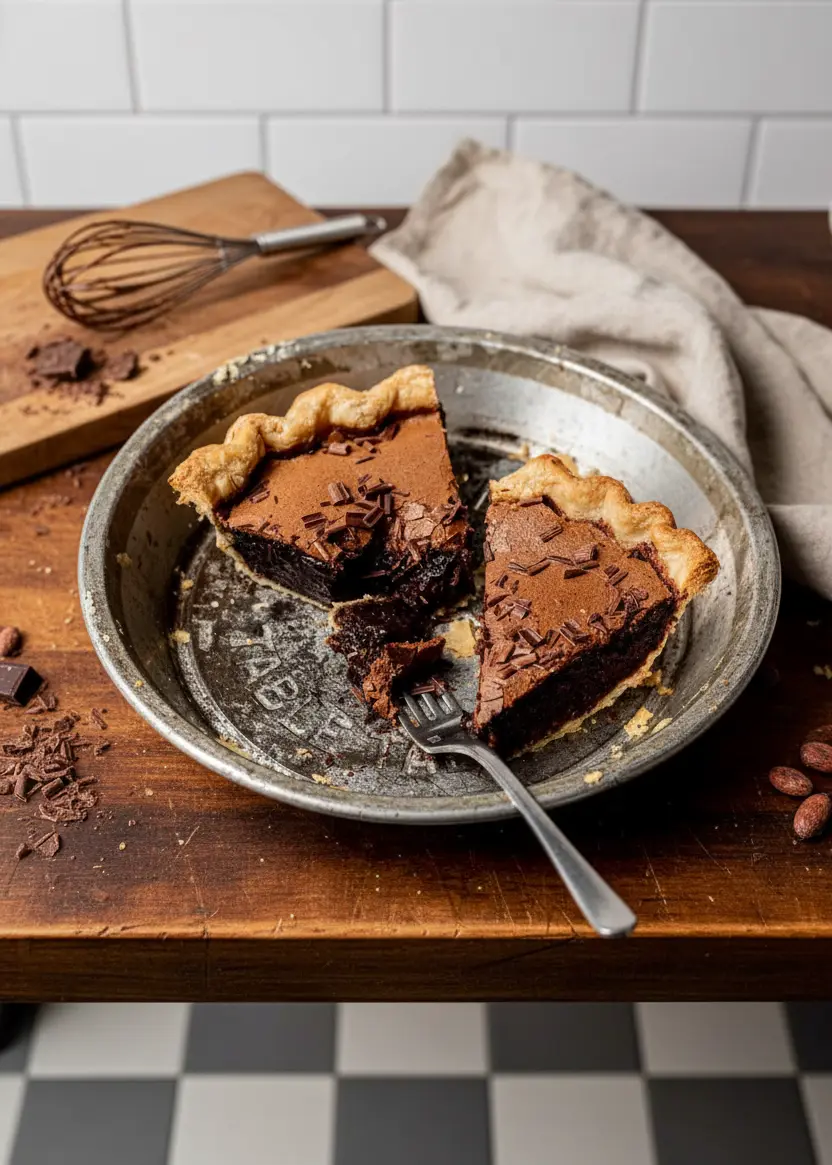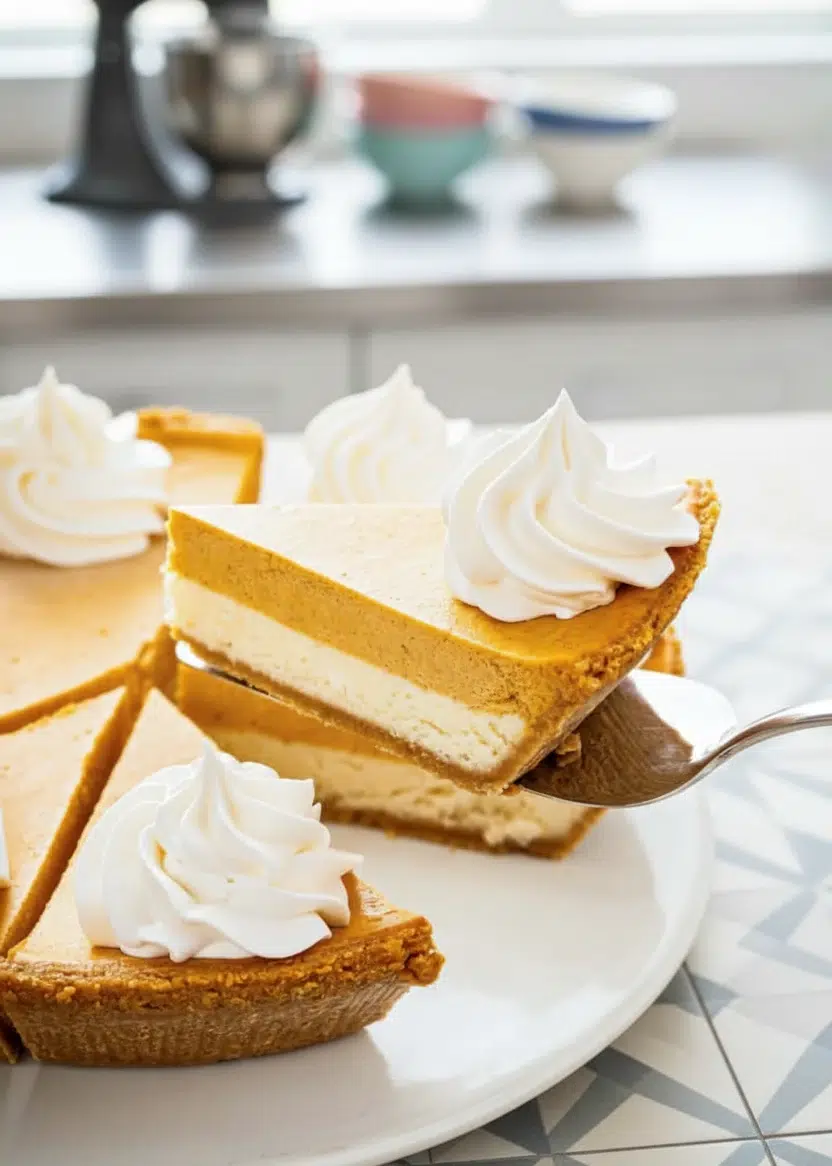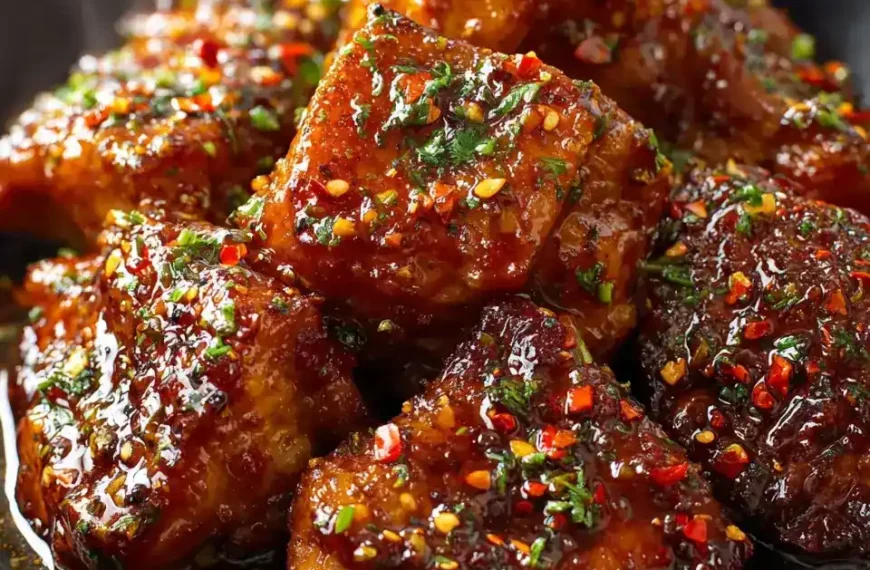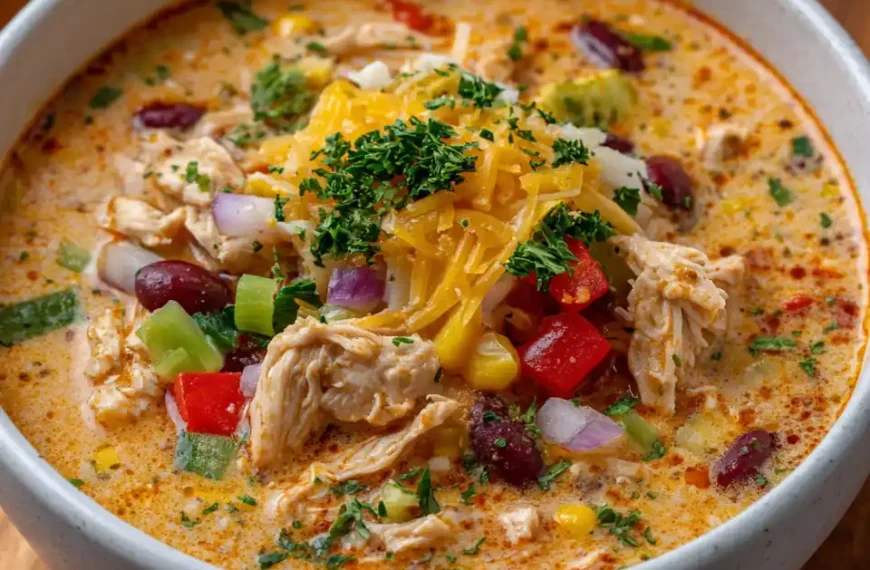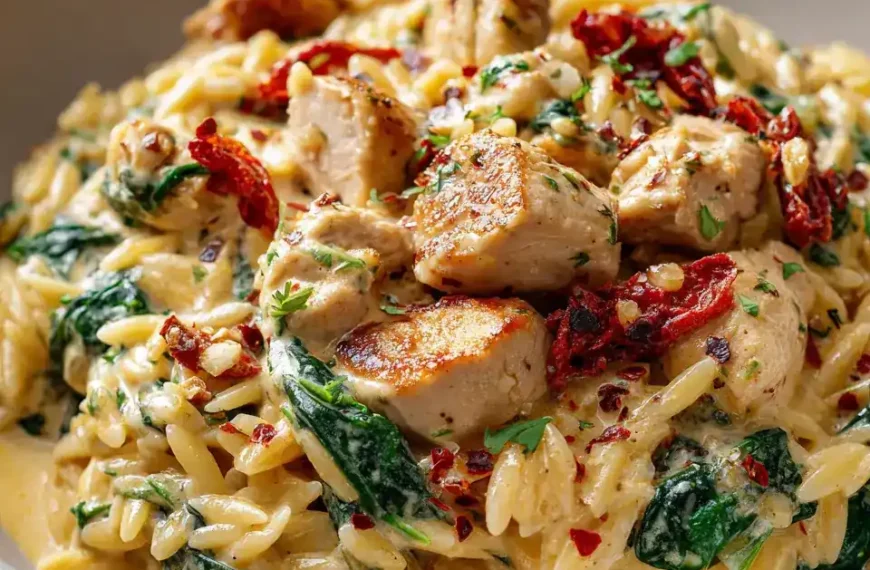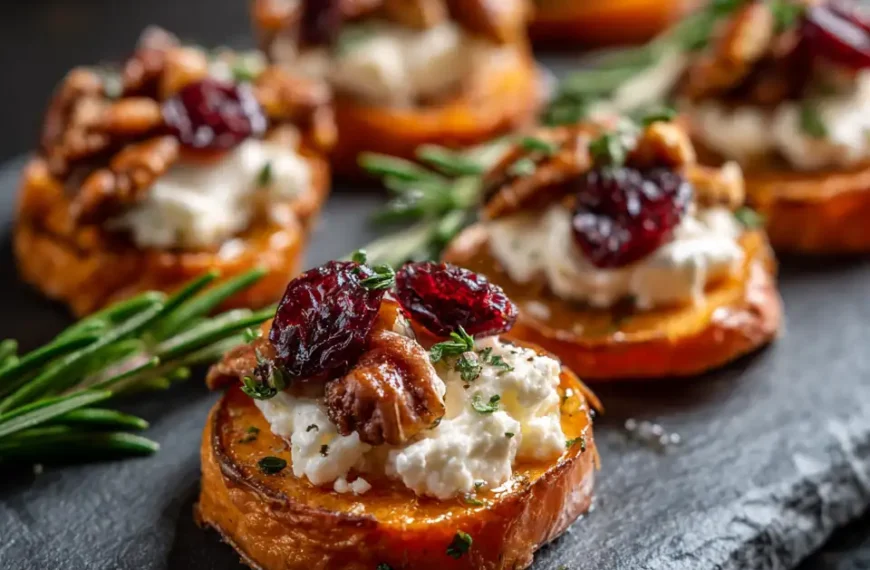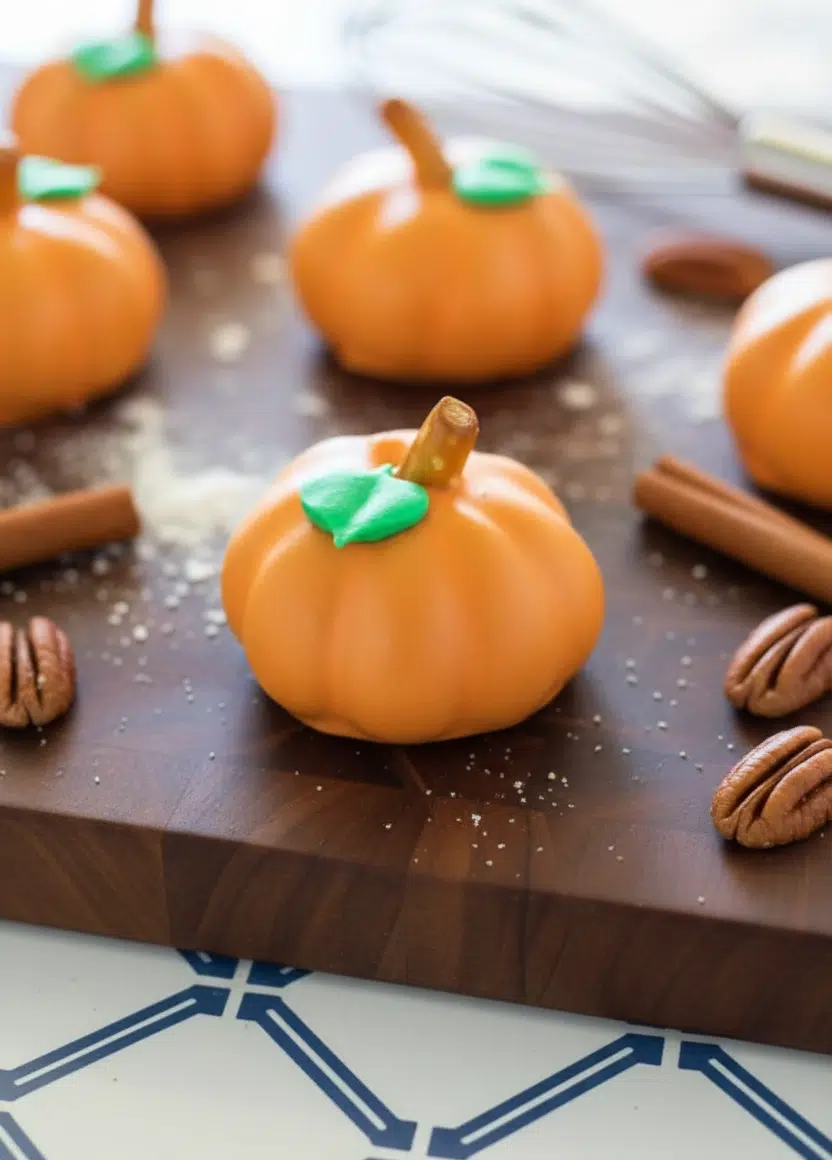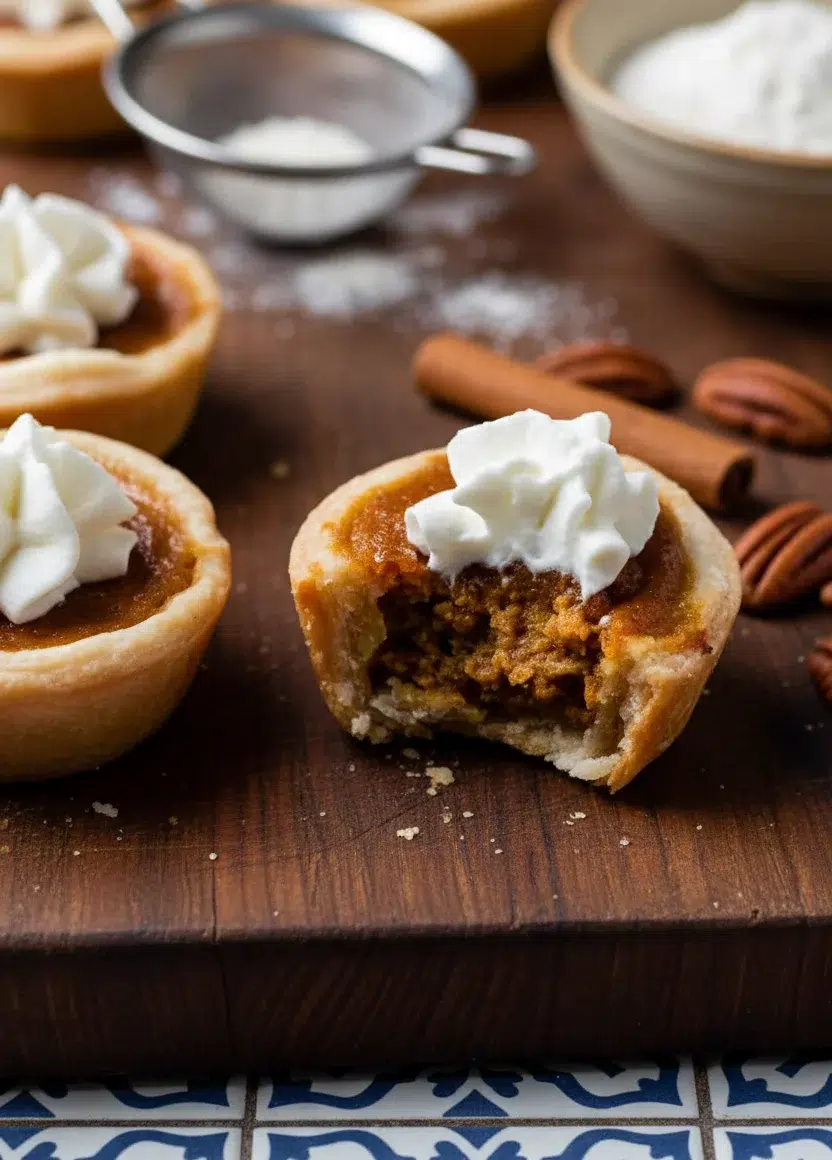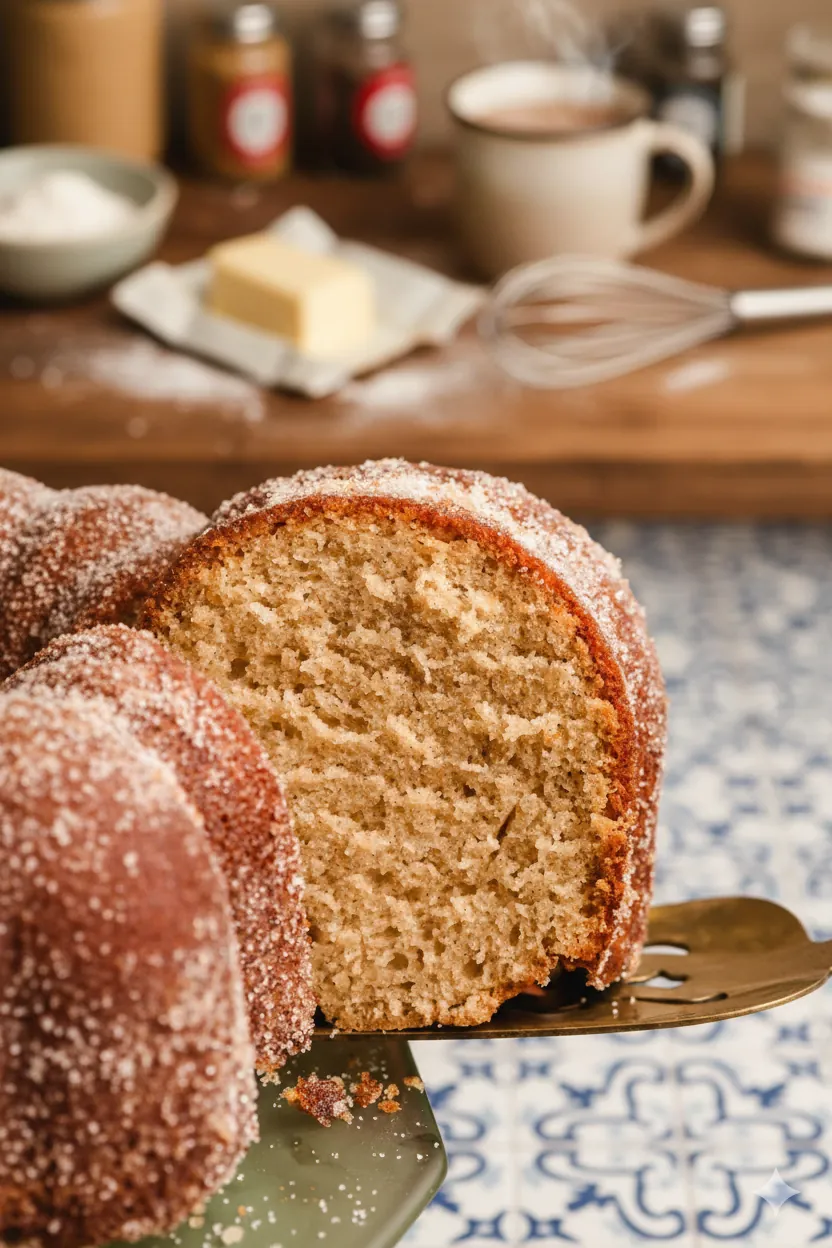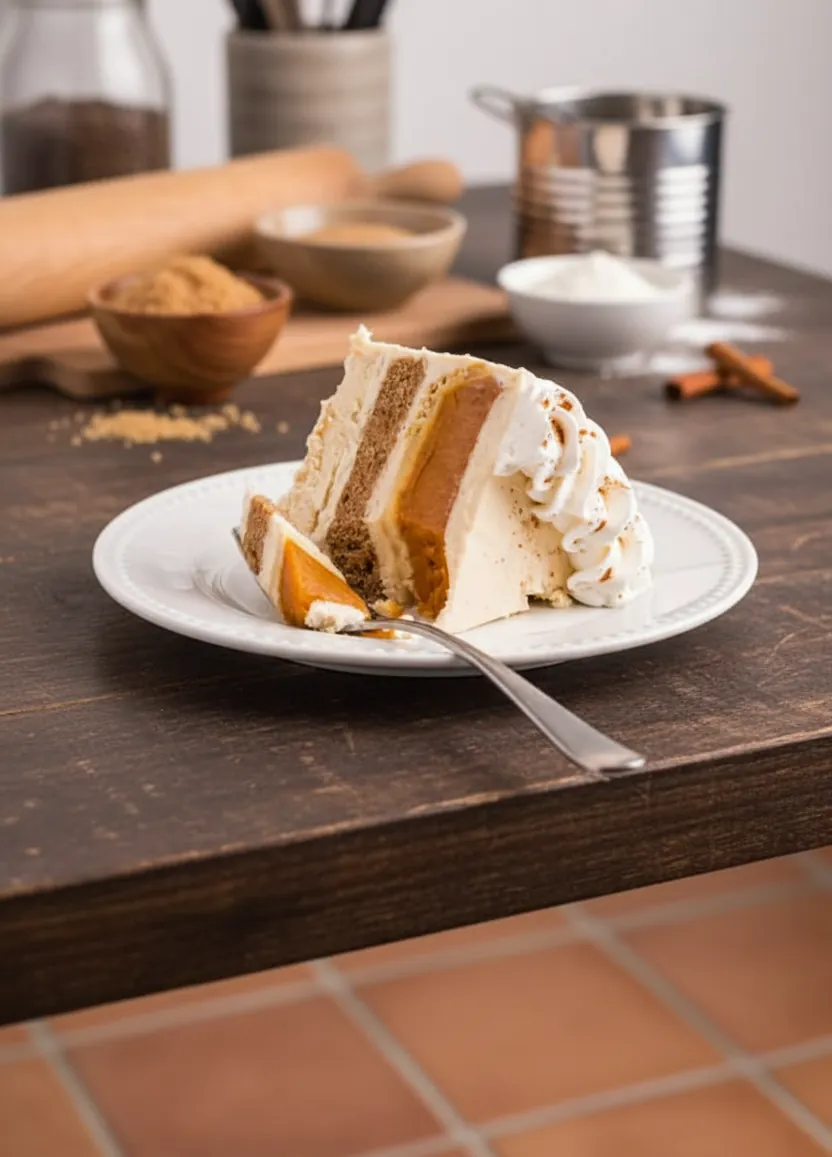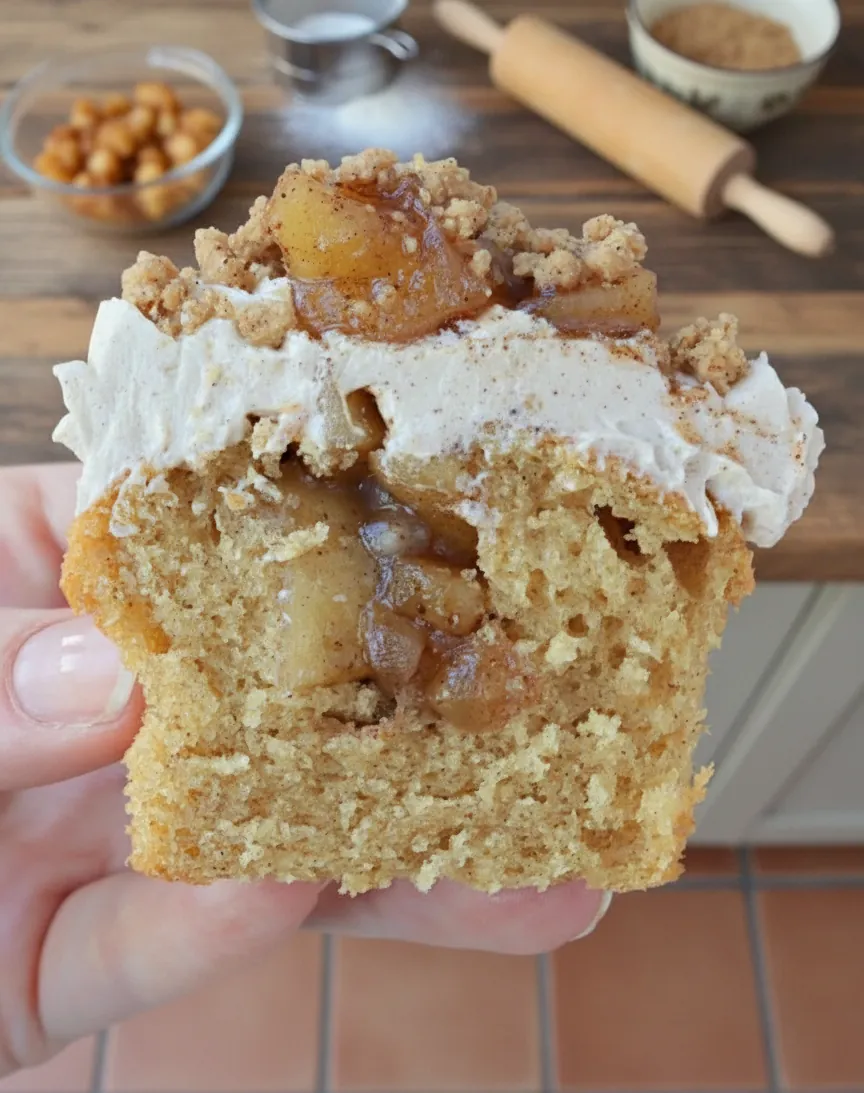Introduction
There’s something undeniably rich and soulful about a chess pie. When you take that classic Southern staple and swirl in dark chocolate, you get a dessert that feels like tradition and indulgence in one perfect slice. This dark chocolate chess pie is deeply flavored, a little fudgy, and smooth all the way through. With a buttery, crisp crust and a glossy, slightly puffed filling, it’s made for chocolate lovers who appreciate depth over sweetness. It’s a dessert that travels well from a casual weekend bake to a holiday centerpiece. Let’s get into the recipe that turns pantry basics into something unforgettable.
The Story Behind the Dark Chocolate Chess Pie
A Pie That Tells Its Own Story
The first time I had a dark chocolate chess pie, I didn’t even know what a chess pie was. It was at a small diner just outside Nashville, the kind with paper menus and sweet tea refills that never stop. I ordered the pie on a whim. It arrived warm, the center barely set, with a scoop of vanilla ice cream starting to melt into the filling. The crust was buttery and golden. The chocolate had a bitter edge that cut the sweetness just enough to keep me coming back for another bite.
That slice turned me into a chess pie person. There’s no meringue, no double crust, no fruit or nuts. Just a smooth, firm custard that holds its shape when sliced. Add dark chocolate to the mix, and you’re creating something with serious flavor. This pie doesn’t rely on fluff or gimmicks. It leans into simplicity, but delivers on texture, taste, and comfort.
Now it’s the dessert I make when I want something that feels special but not fussy. The ingredients are easy to find, the method is forgiving, and the flavor is rich without being heavy. That’s why it has earned a permanent place in my recipe binder.
What Makes It Different From Regular Chocolate Pie
Most chocolate pies lean sweet. They’re often silky and pudding-like, sometimes topped with whipped cream or tucked into a cookie crust. This dark chocolate chess pie is different. The filling is thick and almost brownie-like, with a top that puffs slightly while baking and sets into a shiny finish. The use of cornmeal and eggs gives it structure and a slight chew at the edges, while the espresso powder brings out the complexity of the chocolate.
Another key element is the crust. While you could use a store-bought version in a pinch, a homemade crust with cold butter and a touch of vodka creates a flaky base that holds up to the richness of the filling. That contrast of textures, the crisp bite followed by the smooth chocolate, is what makes this pie stand out.
It’s not flashy. But it is dependable, rich, and layered with flavor. Whether you’re introducing it to someone new or baking it for someone who’s loved chess pie their whole life, this dark chocolate version hits all the right notes.
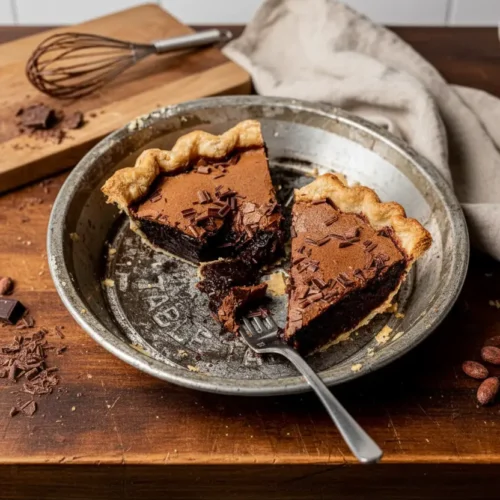
Dark Chocolate Chess Pie
Equipment
- Kitchen Scale
- 9″ Pie Pan
- Rolling Pin
Ingredients
- For the pie crust:
- 200 g 1 ⅔ cups all-purpose flour
- ½ teaspoon kosher salt
- 140 g 10 tablespoon unsalted butter, cold
- 24 g 2 tablespoon vodka, optional
- 1 cup ice water
- For the dark chocolate chess filling:
- 113 g 8 tablespoon unsalted butter
- 56 g 2 oz bittersweet chocolate
- 21 g ¼ cup dutch process cocoa powder
- 1 teaspoon espresso powder
- ½ teaspoon salt
- 113 g ½ cup whole milk
- 200 g 1 cup granulated sugar
- 106 g ½ cup dark brown sugar
- 25 g 3 tablespoon cornmeal
- 4 eggs room temp
- 1 teaspoon vanilla extract
Instructions
- For the pie crust:
- In a medium bowl combine the flour and salt.
- Cut the cold butter into cubes and toss in the flour.
- Using your fingers, cut the butter into the dry ingredients until quarter sized pieces are left.
- Add the vodka (optional) and a small amount of water, then toss with your hands to combine. Continue adding very small amounts of water until the dough can hold together, but is not overly wet.
- Wrap the dough tightly in plastic wrap, then chill for one hour.
- On a lightly floured surface, roll the dough out into a rough rectangle, fold in half, then again into quarters. Wrap the dough in plastic wrap and chill for another 30 minutes.
- Roll the dough out again into a rough rectangle and repeat the folding process. Shape the dough into a disk, wrap tightly in plastic wrap, and chill overnight.
- Roll out the pie dough into a rough circle about ⅛″ in thickness.
- Carefully place the dough in the pie pan, pressing up against the sides. Cover and chill in the fridge for about 20 minutes.
- Take the pie crust out, cut off the excess dough, and crimp the edges as desired. Dock the bottom and sides of the crust all over with the tines of a fork, then chill for another 20-30 minutes.
- Meanwhile, place a baking sheet in the oven and preheat it to 425 degrees F.
- Place a large piece of parchment paper over the pie crust and fill with pie weights, dry beans, or dry rice all the way up to the crimp.
- Place the pie pan on the hot baking sheet and bake for 18 minutes.
- Take the pan out, take all of the pie weights out, then brush the pie crust with an egg wash all over, except for the crimp.
- Bake for an additional 3-5 minutes or until barely golden. Allow the pie crust to cool completely before adding the pie filling.
- For the dark chocolate chess filling:
- Turn the oven down to 325 degrees F.
- In a small saucepan, combine the butter, chocolate, cocoa powder, espresso powder, salt, and milk. Place over low-medium heat and stir often until fully melted and smooth. Set aside to cool.
- In a large mixing bowl, add the sugars, cornmeal, eggs, and vanilla. Use an electric hand mixer to beat until lighter in color and doubled in size.
- Drizzle in the dark chocolate mixture, and mix until fully combined.
- Pour the filling into the cooled crust, then place on a baking sheet. Wrap aluminum foil around the crimp to prevent it from getting too dark. Bake the pie for 1 hour to 1 hour 15 minutes until set and slightly puffed up.
- Allow the pie to cool for at least 2 hours before serving.
Notes
Bake the pie on a hot baking sheet on the lowest rack in the oven. No one likes a soggy pie bottom! To achieve a beautifully golden, crisp bottom pie crust preheat the oven with a baking sheet on the bottom rack. When it’s time to bake the pie, place the pie dish directly on top of the hot baking sheet! Nutrition Facts
Serving: 1piece | Calories: 572kcal | Carbohydrates: 65g | Protein: 7g | Fat: 32g | Saturated Fat: 19g | Polyunsaturated Fat: 2g | Monounsaturated Fat: 9g | Trans Fat: 1g | Cholesterol: 152mg | Sodium: 338mg | Potassium: 199mg | Fiber: 3g | Sugar: 41g | Vitamin A: 935IU | Calcium: 61mg | Iron: 3mg
Building the Perfect Chocolate Filling and Crust
Ingredient Techniques That Matter
Dark chocolate chess pie is simple at its core, but each ingredient plays an important role. Let’s start with the crust. You’re using all-purpose flour, salt, and butter. That’s standard. But what makes this crust special is the method. Keeping the butter cold and adding just enough liquid is the difference between a flaky crust and a tough one. That’s where vodka comes in. It moistens the dough without activating gluten like water does. The result is a tender, crisp crust that slices cleanly and supports the heavy filling.
Rolling and folding the dough a few times builds layers. These folds trap steam as the pie bakes, helping the crust puff slightly and become light but structured. It’s a trick borrowed from laminated dough, and it’s worth the effort.
The filling is where things get serious. You melt unsalted butter, bittersweet chocolate, cocoa powder, and espresso powder together. These combine into a glossy base that’s both rich and complex. The espresso doesn’t taste like coffee. It just sharpens the chocolate flavor, making it deeper and more intense. This step sets the tone for the entire pie.
Meanwhile, you beat together two kinds of sugar, cornmeal, eggs, and vanilla. The dark brown sugar adds a subtle molasses flavor, while the cornmeal gives a bit of texture that keeps the custard from becoming one-note. When you mix in the melted chocolate, the batter becomes smooth and pourable. It’s rich but balanced, and it bakes up beautifully.
This pie is more than just sugar and chocolate. The ingredients are carefully chosen and measured to produce a filling that sets without being dry and stays moist without being runny. The result is a slice that holds together on the plate but melts in your mouth.
How to Avoid Soggy Bottoms and Underbaking
A chess pie depends on its crust to do more than just hold the filling. It has to stay crisp and structured, even under a dense chocolate custard. The key to avoiding a soggy bottom is heat and timing.
First, chill your crust at every stage. After rolling it out. After pressing it into the pan. After docking it with a fork. The colder the crust is when it hits the oven, the better it will hold its shape and layers. You want cold butter and relaxed gluten.
Next, bake the crust on a preheated baking sheet placed on the lowest rack. This creates direct heat from the bottom, which firms up the base before the filling can soak in. It’s the same technique used for bakery-style pies with golden, crisp shells.
Blind baking with pie weights and parchment paper is a must. This step keeps the crust from puffing or shrinking. Once the weights are removed, a quick second bake with an egg wash seals the surface. It acts like a barrier, keeping the filling from seeping into the dough.
When baking the filled pie, use foil to shield the crimped edges. This keeps them from overbrowning while the center finishes. Bake until the filling is puffed and set, with a slight jiggle in the middle. It will firm up as it cools.
Let the pie cool completely before slicing. This patience pays off with clean, beautiful slices and a texture that feels smooth and custardy without falling apart.
Flavor, Texture, and Serving Tips
What to Expect When You Taste It
The first bite of a dark chocolate chess pie is memorable. You get a hit of smooth, intense chocolate, followed by a subtle caramel sweetness from the brown sugar. The texture is unlike most chocolate desserts. It’s not creamy like a mousse or chewy like a brownie. It’s firm at the edges, soft in the middle, and just a little fudgy. That custard-like structure is thanks to the eggs and cornmeal, which help the pie hold together while keeping it tender.
There’s also depth. The bittersweet chocolate gives this pie a mature flavor that isn’t too sweet. The espresso powder brings out complexity, and the dutch process cocoa adds richness without sharpness. It’s the kind of chocolate flavor that lingers.
The contrast between the crisp crust and soft filling makes each bite interesting. You’ll notice a very slight chew where the sugar has caramelized against the crust. It’s a small detail, but one that elevates the entire pie.
The filling sets into a glossy surface with a slightly cracked top, which is exactly what you want. It signals that the custard has baked through but still has moisture. The center should not be dry. When done right, it will slice cleanly and hold its shape without crumbling or sinking.
This pie is chocolate-forward but balanced. It doesn’t overwhelm your palate. Instead, it invites you to slow down and savor. Whether served warm, room temperature, or cold, it offers a rich, steady flavor that stays with you long after the fork is down.
Serving Ideas That Bring Out Its Richness
This dark chocolate chess pie is strong enough to stand alone, but a thoughtful garnish can enhance the experience. A dusting of powdered sugar softens the look and adds a touch of sweetness. A dollop of whipped cream cuts through the richness and brings a cool contrast.
If you want something extra, try serving each slice with a spoonful of lightly sweetened crème fraîche. Its tanginess works beautifully with the dark chocolate. A scoop of vanilla or coffee ice cream is another great option, especially if you’re serving the pie slightly warm.
This pie holds its shape well, making it ideal for make-ahead desserts or transport. If you’re hosting, cut and plate the slices ahead of time and let them sit at room temperature for about 30 minutes before serving. The flavor becomes fuller and smoother as the chill wears off.
Pair it with strong coffee or a glass of red wine. A dark roast or espresso mirrors the bitter notes in the chocolate. A bold red wine or port highlights the sweetness without overpowering the filling.
This is not a dessert you rush through. It’s meant to be shared slowly, at the end of a meal, with conversation lingering and forks tapping plates. It’s the kind of pie that turns casual meals into memorable ones.
Why This Pie Belongs in Your Baking Rotation
A Dessert That Bridges Generations
Dark chocolate chess pie isn’t just a recipe. It’s a bridge between old and new, between the kind of simple desserts your grandmother made and the rich, flavor-forward bakes people crave today. What makes it special isn’t just the chocolate, though that’s certainly part of it. It’s the balance of texture and flavor, the way it cuts clean but melts on the tongue, and how it manages to feel both classic and indulgent.
The ingredients aren’t fancy, but the method respects tradition. It’s a pie that doesn’t need embellishment to stand out. It just works. It fits on a holiday table as easily as it does on a Wednesday night. That’s what keeps bakers coming back to it. You don’t outgrow a recipe like this.
The best part? It tastes even better the next day. As the filling sets, the flavors deepen. The chocolate becomes rounder, the sugars mellow, and the crust stays crisp. A well-baked chess pie holds beautifully in the fridge, making it perfect for make-ahead occasions or gifting.
Perfect for Celebrations, or Just Because
This pie earns its spot at Thanksgiving, but it also works year-round. Serve it at dinner parties, bring it to potlucks, or make it on a slow Sunday afternoon just because you feel like baking. It’s reliable. It travels well. And it’s one of the few pies where you don’t feel the need to pile on toppings to make it impressive.
Dark chocolate chess pie is the kind of dessert people remember. You’ll get recipe requests. You’ll have to wrap up slices for friends. You may even find yourself cutting another piece before the first one’s finished. That’s the power of a dessert that knows exactly what it’s doing — simple ingredients, bold flavor, and a crust that holds it all together.
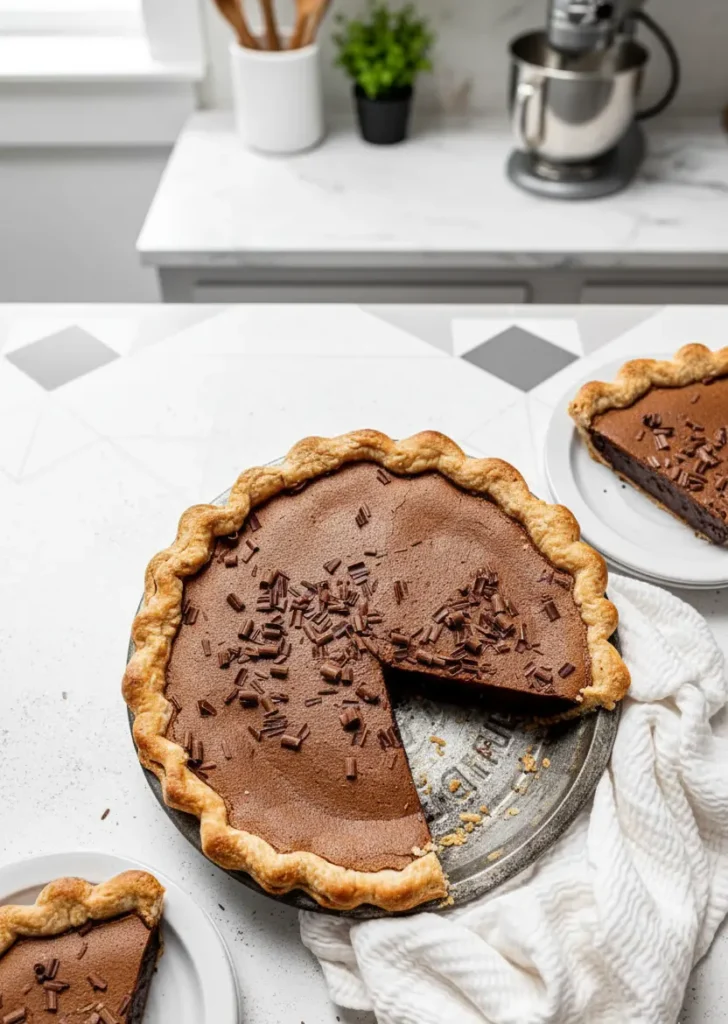
FAQ Section
What is chocolate chess pie made of?
Chocolate chess pie is made from butter, bittersweet chocolate, cocoa powder, sugar, eggs, cornmeal, milk, and vanilla. These create a smooth, rich custard filling in a flaky crust.
What does chocolate chess pie taste like?
It tastes like a cross between a brownie and chocolate custard. The flavor is bold but not too sweet, with a slightly crisp top and fudgy center.
Why do they call it a chocolate chess pie?
“Chess pie” comes from Southern tradition. It’s believed to be a twist on “just pie.” When cocoa or melted chocolate is added, it becomes chocolate chess pie.
What was Bill Clinton’s favorite pie?
Bill Clinton’s favorite pie was chocolate chess pie. During his presidency, it was often served at special events and state dinners.
Conclusion
Dark chocolate chess pie is more than just a dessert. It’s comfort, tradition, and bold flavor baked into a single slice. With its glossy top, fudgy center, and crisp homemade crust, it delivers a rich experience without relying on complicated techniques or hard-to-find ingredients. Whether you’re bringing it to a family gathering or baking it on a quiet weekend, this pie brings warmth and satisfaction to any table. Once you make it, it becomes one of those recipes you keep coming back to. The kind of pie that always disappears, one slice at a time.
